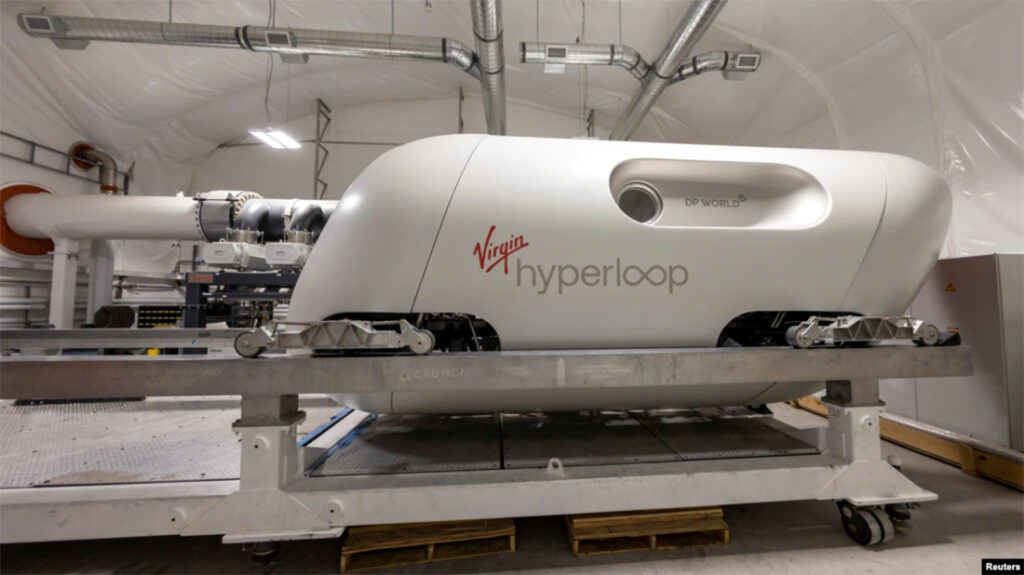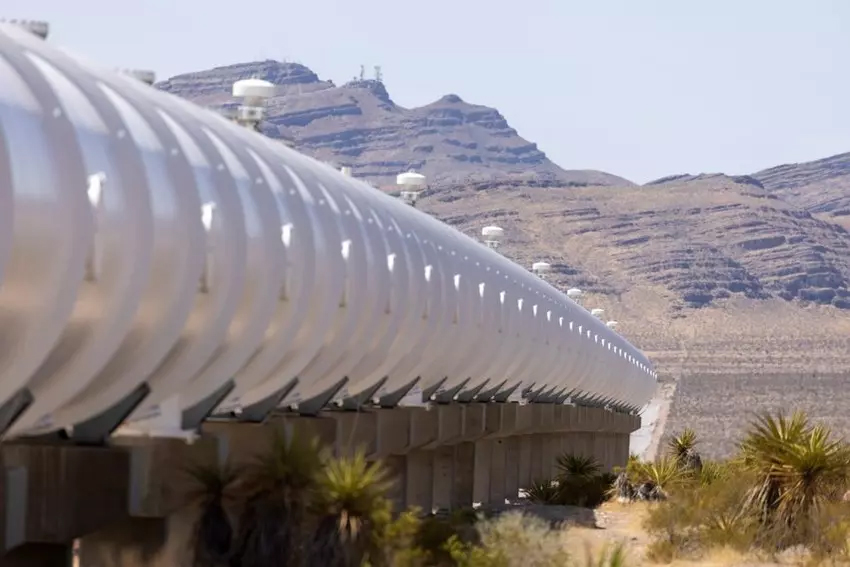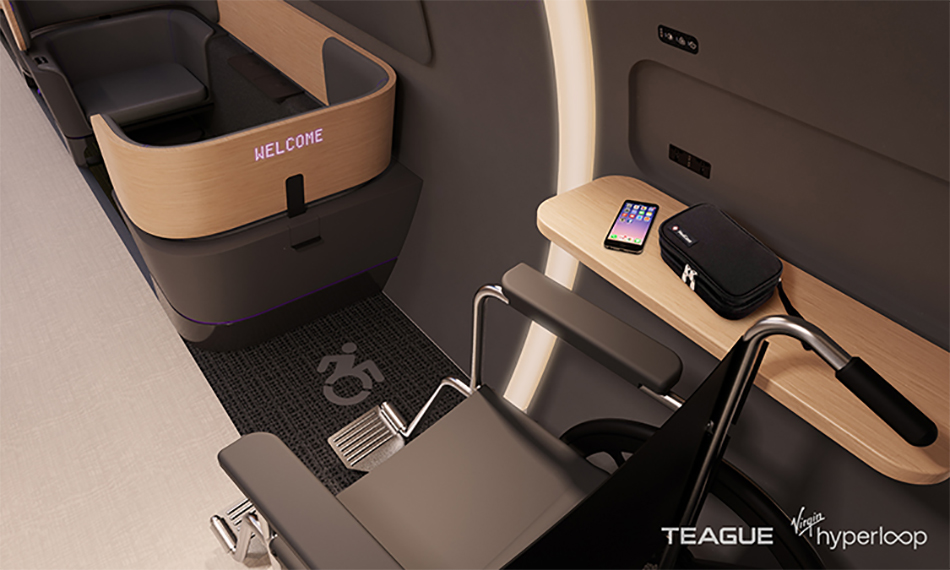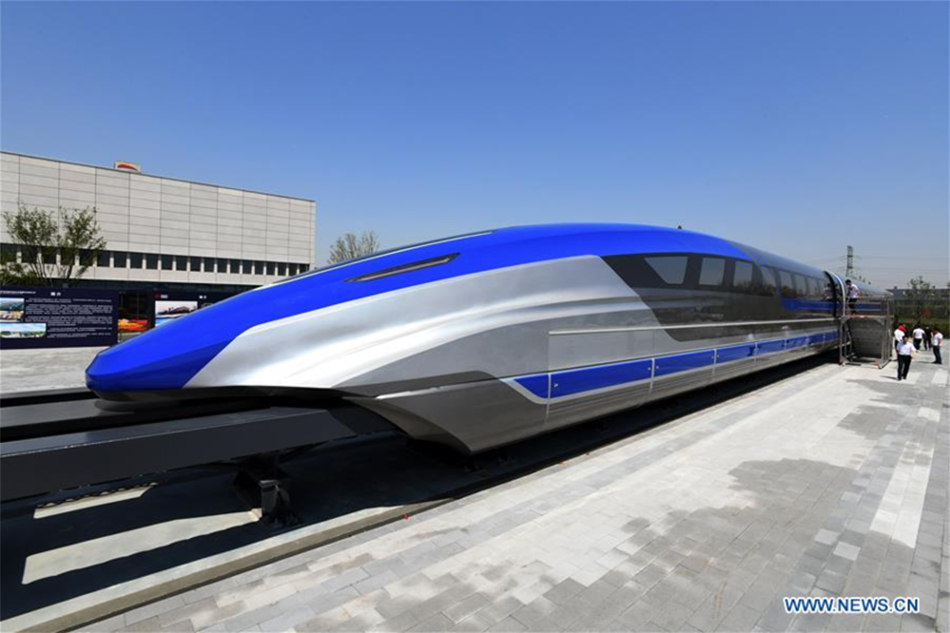Future Mass Travel in Virgin Hyperloop’s Floating Magnetic Pods

Virgin Hyperloop successfully tested its futuristic transport pod inside vacuum tubes, carrying passengers at very high speeds on November 8, 2020. The trial had two company staff as passengers, Virgin Hyperloop co-founder and CEO Josh Giegel and the passenger experience director Sara Luchian. They traveled along a 500m track in 15 seconds, at the speed of 172km/hr (107mph). It was a small portion of the 1,000km/h travel speed they envision.
They conducted the test at their DevLoop testing site in the desert of Nevada. They had more than 400 unmanned tests before they have the human trial, with an independent safety assessor supervising the event. The test track is 500 meters long. Its diameter is 3.3 meters.
The pod they used was white and red, which they call Pegasus. The pod was transferred into an airlock after the removal of the air inside the vacuum tube.
The company
Virgin Hyperloop is an American company dedicated to transportation technology. One of the company’s partners is the Virgin Group of Sir Richard Branson. Another partner is the Dubai government-owned company, DP World. Virgin Hyperloop will develop the high-speed tech concept they call the Hyperloop and make it available commercially. Hyperloop is a vacuum train variant.

Future mass transport
It was the first time that the hyperloop conducted a trial run with passengers. The technology will allow passengers to travel through nearly air-free vacuum tunnels via magnetic levitation. The company wants to be the forerunner of future mass transportation innovators.
According to John Giegel, the travel will feel like riding an aircraft during take-off and after gaining speed. Passengers will not even feel any turbulence.
Each pod can take in 28 passengers, with space for persons with disabilities. Giegel said they could customize the pods for freight and short and long-distance travel.
The Hyperloop pods are small. They will travel in convoys. With the company’s switching technology, the individual pods can get out of the convoy and deliver the passengers to their destination directly. They designed the system to offer flexibility, like express trips and divert routes depending on the demand. With their system, it will significantly reduce the waiting time for public transportation.

He added that they are optimistic that by 2027 they can start commercial operations. They are still working on the power electronics, some sensors, and the needed batteries.
They are thinking about developing Hyperloop passenger routes in India initially, as the country’s transport system is outdated and often overloaded. They are also looking at developing a Saudi Arabian system as the government does not have an infrastructure.
The Pegasus Pod
The test pod, which they also call XP-2, was designed with the collaboration of the famous Danish design firm of Bjarke Ingels, an architect. It is a scaled-down version of the Virgin Hyperloop. Measuring about 15 to 18 feet long, the pod weighs about 2.5 tons.
Its propulsion is via magnetic levitation, which is what bullet trains use. Shanghai Maglev is the faster commercial bullet train today, with its top speed reaching about 300mph.
Pegasus will be on display starting November 2021 at the Smithsonian Historic Arts and Industries Museum in Washington.
Other floating train builders

China is attempting to set a new record by building a floating train that emulates air travel. The country already unveiled a prototype of their new magnetic levitation (maglev) train with a maximum of 600km/hr speeds.
Maglev technology employs powerful electromagnets. These magnets lift and propel the train forward through an air cushion. Since there is no friction between rails and wheels, the trains can run at more incredible speeds, with less vibration and noise.
The fastest commercial maglev service in the world is the Shanghai Maglev that operates in China. Its top operational speed today is 431km/h. It’s been in operation since 2003, carrying passengers from Pudong Airport to the center of the city.
The prototype maglev train will be for the Beijing-Shanghai line, which spans 1300km. Currently, the Fuxing bullet trains service the route. The bullet train travels for about 350km/hr. Once the new maglev train is operational, travel will only take three and a half hours from Beijing to Shanghai. Compare it to the flight time of four and a half hours, and you will see how fast the bullet train will be.
Japan is also building a maglev line to serve the Tokyo-Nagoya route. The line will be in operation by 2027. There are also plans to have a maglev line in 2045 to serve the Tokyo-Nagoya route.
With the thought of not encountering traffic, traveling without noise and turbulence in utter comfort and almost as fast as air travel, there is no reason why the commuting public will not wait for Virgin Hyperloop.